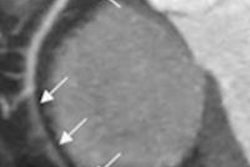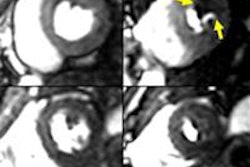ACOs are being promoted as a way to improve healthcare quality and decrease costs by transferring accountability of patient care to the healthcare organization, wrote Dr. Alexander Adduci, PhD, in an email to AuntMinnie.com.
"Radiologists are often considered a cost center in this [ACO] model, but they can play a primary role in identification of patients who are in ACO at-risk populations and can help facilitate adherence to ACO guidelines," he wrote. "In our study, we sought to show the magnitude of the effect we could have working with just a limited set of ACO guidelines, and we believe that radiologists can play a central role in the ACO model."
The study reviewed the scans of more than 500 patients who underwent chest CT or CT angiography in the center during the last four months of 2012. The presence of coronary artery calcifications was measured as mild, moderate, or severe. The patients' medical records were then examined to determine if there was a documented diagnosis of coronary artery disease, and whether the patients were taking antithrombotic medications based on ACO guidelines.
There was some documented diagnosis of coronary artery disease, the group reported, but only in about one-fourth of the patients with calcifications.



















